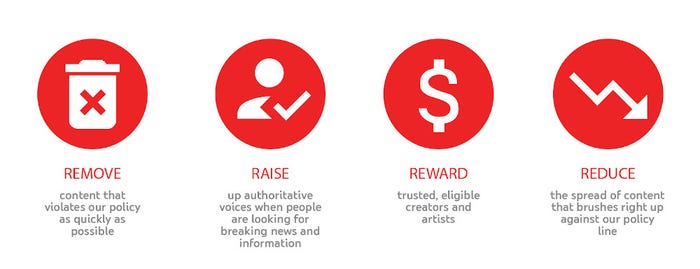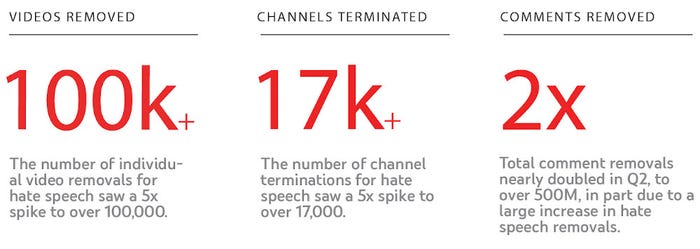YouTube flexes its editorial musclesYouTube flexes its editorial muscles
As video sharing service YouTube strives to censor ever more rigorously, can it still be considered a neutral platform?
September 4, 2019

As video sharing service YouTube strives to censor ever more rigorously, can it still be considered a neutral platform?
Social media platforms are exempt from many of the rules and regulations that govern the media because they don’t exercise editorial control over what is published on them. Every time they move to censor some types of content and favour others, however, that status comes into question.
Last week YouTube CEO Susan Wojcicki published a blog titled Preserving openness through responsibility, in which she argued that it was vital for YouTube to be as open as possible and that the only way to guarantee that was to get rid of any content it doesn’t like. Wojcicki characterised this censorship as ‘responsibility’ and explained that it’s comprised of four other Rs that are explained in the graphic below.

Clearly proud of its removal efforts, YouTube wasted little time in blogging about its removal efforts. Featuring liberal use of conveniently nebulous and ill-defined terms such as ‘inappropriate’ and ‘problematic’ the blog details YouTube’s constant meddling with its own policies and the increasing vigour with which it enforces them by taking down content and kicking creators off the platform in the name of openness.

Of course YouTube does have to exercise some control over its platform, for example the removal of illegal content. The problem for creators and YouTube’s own claims of openness is thatits policies extend far beyond preventing illegality, are arbitrary and are getting stricter by the day. Protecting its advertisers by demonetizing edgy content is one thing, but there has to be a point at which the imposition of a strict and comprehensive set of editorial parameters on its creators means YouTube can no longer be considered a platform and is thus legally responsible for every piece of content it publishes.
About the Author
You May Also Like










.png?width=300&auto=webp&quality=80&disable=upscale)


_1.jpg?width=300&auto=webp&quality=80&disable=upscale)